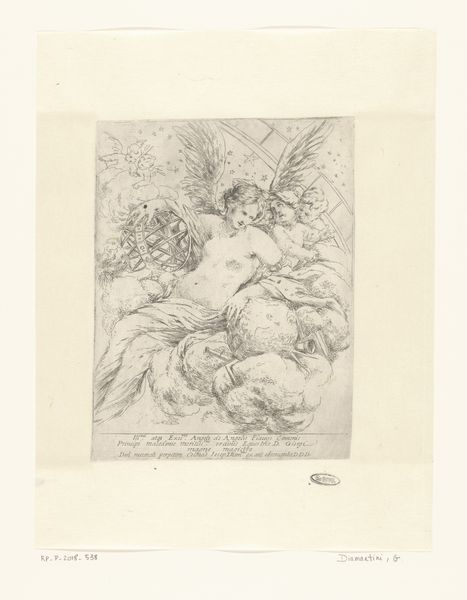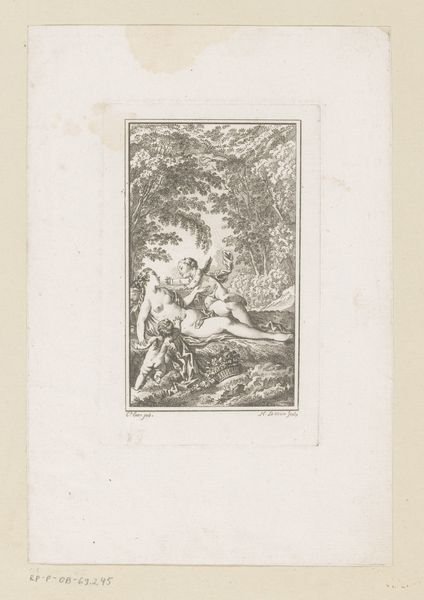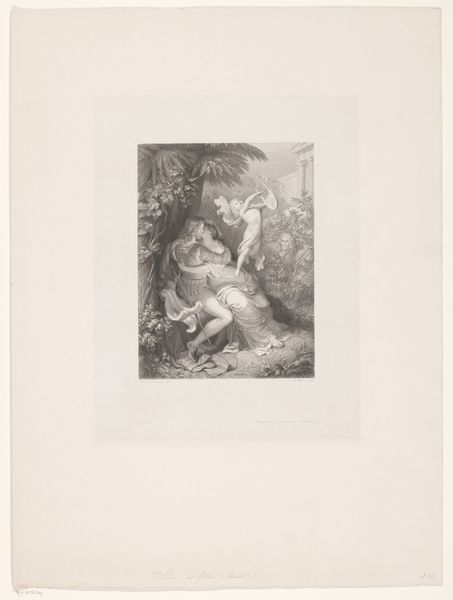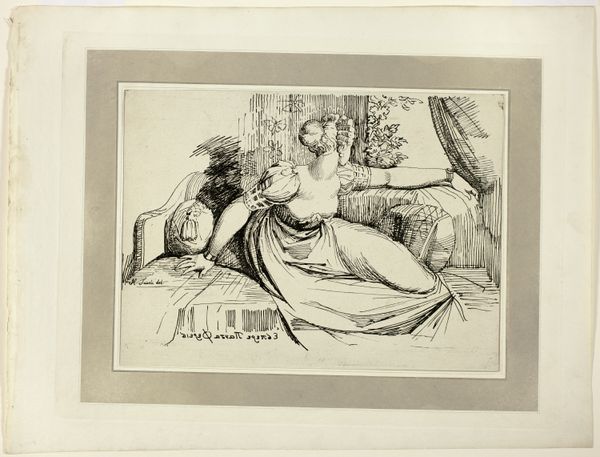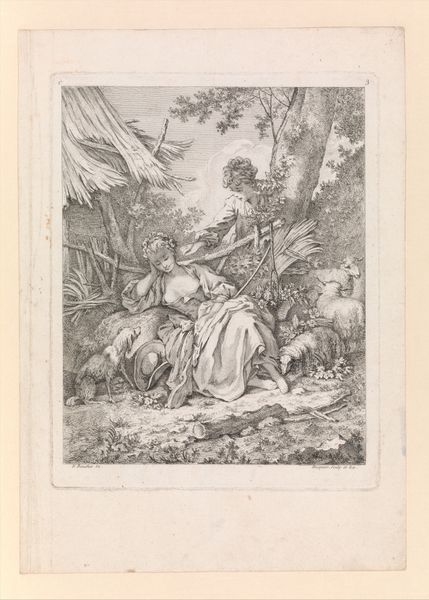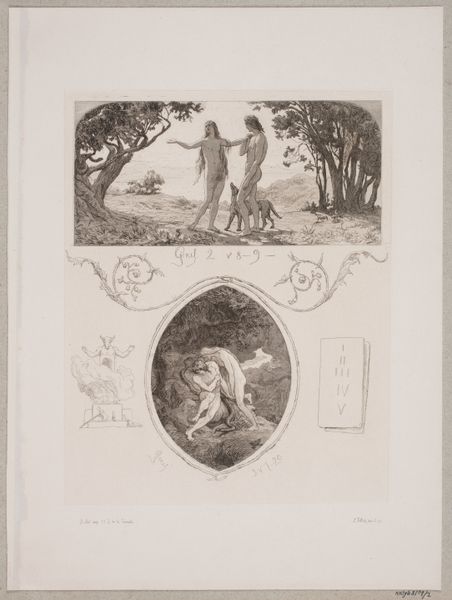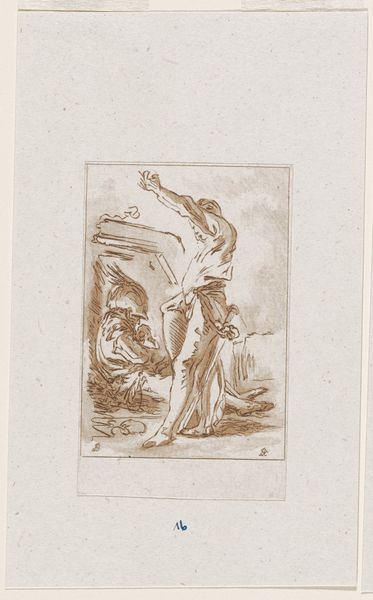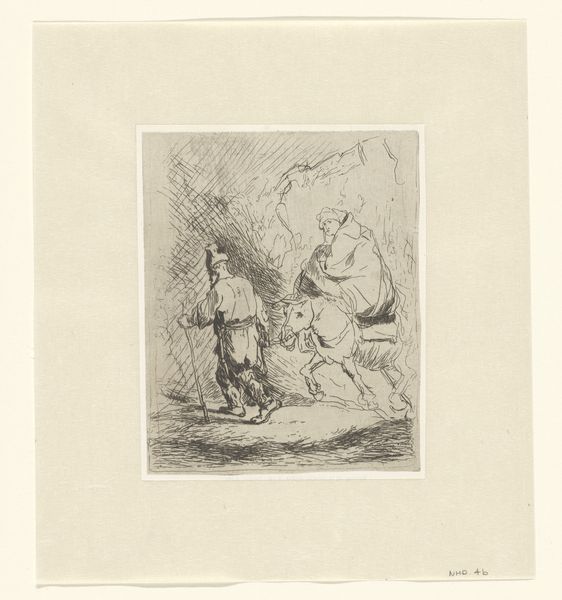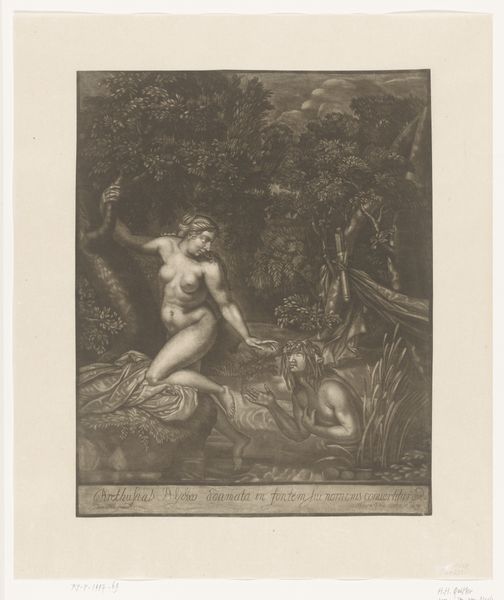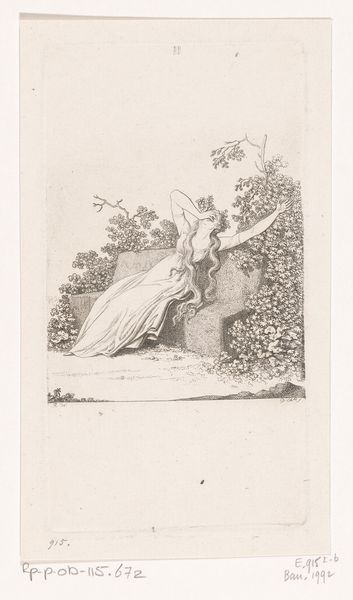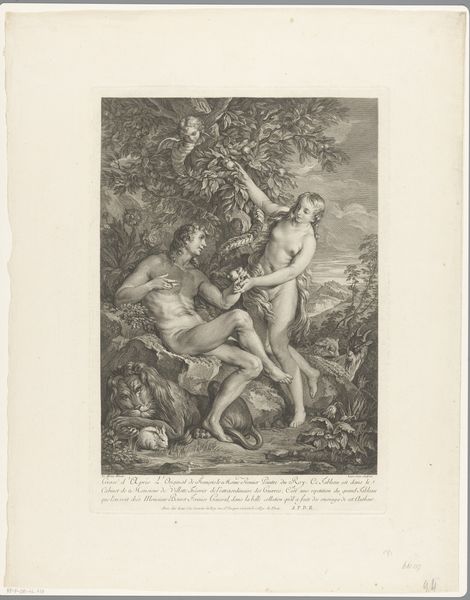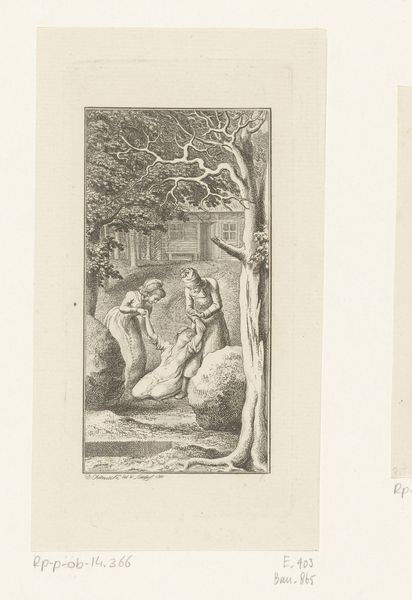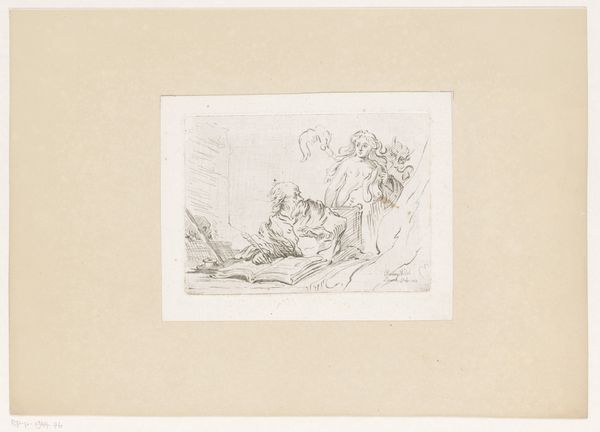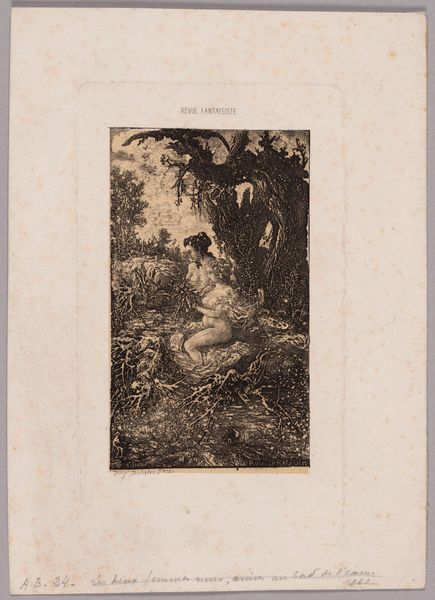
drawing, ink, engraving
#
drawing
#
pen illustration
#
line drawing illustration
#
landscape
#
figuration
#
ink line art
#
ink
#
romanticism
#
mythology
#
line
#
academic-art
#
nude
#
engraving
Dimensions: height 110 mm, width 83 mm
Copyright: Rijks Museum: Open Domain
Editor: Here we have "Zephyrus," an ink drawing by Etienne Acille Réveil, created sometime between 1810 and 1851. It’s a rather delicate scene; the lines are so fine and detailed. It makes me think of classical illustrations. What stands out to you in this work? Curator: The persistent use of line and form to render an understanding of the classical body in nature—it is a fascinating echo of antiquity, but infused with a Romantic sensibility. Look how Zephyrus, the west wind, isn't simply depicted; he's evoked. Notice how the draping fabric around his body seems to mimic and even become the wind itself, physically manifesting that force in nature. Do you see that connection? Editor: I do! So the fabric isn't just clothing; it's part of what he represents. Is that why the landscape almost looks…alive, too? Curator: Precisely! This image is loaded with meaning that moves beyond literal representation, steeped in symbolic language. Consider the very choice of Zephyrus, a gentle, life-bringing wind. How might that contrast with, say, depicting a raging storm or a destructive force of nature? Editor: It definitely seems intentional. The wind brings life; it's benevolent. I’m noticing a narrative now… everything points to renewal and growth. Curator: And within that context, how do we view the idealized, nude male form of Zephyrus? The imagery and cultural connotations attached to this mythological being? Editor: Hmmm... Maybe as an embodiment of idealized beauty, the classical idea of human perfection intertwined with nature’s vitality? Curator: An interesting conclusion; indeed, the artist masterfully utilizes symbols from classical antiquity in this romantic pursuit. The memory of prior interpretations subtly reshapes current appreciation. Editor: I see how understanding the symbolism and cultural background completely enriches the image. Thank you!
Comments
No comments
Be the first to comment and join the conversation on the ultimate creative platform.
